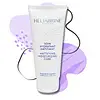What's inside
What's inside
 Key Ingredients
Key Ingredients

 Benefits
Benefits

 Concerns
Concerns

 Ingredients Side-by-side
Ingredients Side-by-side

Water
Skin ConditioningGlycerin
HumectantNylon 6/12
AbsorbentPPG-1-PEG-9 Lauryl Glycol Ether
EmulsifyingSodium Polyacrylate
AbsorbentPropylene Glycol
HumectantPolyacrylamide
Propanediol
SolventC13-14 Isoparaffin
EmollientImperata Cylindrica Root Extract
Skin ConditioningAllantoin
Skin ConditioningParfum
MaskingCaprylyl Glycol
EmollientCapryloyl Serine/Silk Amino Acid Methyl Esters
Skin ConditioningChlorphenesin
AntimicrobialTetrasodium EDTA
Ethylhexylglycerin
Skin ConditioningLaureth-7
EmulsifyingPyridoxine Hcl
Skin ConditioningCaprylhydroxamic Acid
Helianthus Annuus Seed Oil
EmollientRosmarinus Officinalis Leaf Extract
AntimicrobialCarbomer
Emulsion StabilisingSorbitol
HumectantSodium Citrate
BufferingCalendula Officinalis Flower Extract
MaskingCentaurea Cyanus Flower Extract
AstringentChamomilla Recutita Flower Extract
MaskingHypericum Perforatum Flower/Leaf/Stem Extract
Skin ConditioningTilia Cordata Flower Extract
Skin ConditioningAcrylates/C10-30 Alkyl Acrylate Crosspolymer
Emulsion StabilisingCitric Acid
BufferingTocopherol
AntioxidantBiotin
AntiseborrhoeicWater, Glycerin, Nylon 6/12, PPG-1-PEG-9 Lauryl Glycol Ether, Sodium Polyacrylate, Propylene Glycol, Polyacrylamide, Propanediol, C13-14 Isoparaffin, Imperata Cylindrica Root Extract, Allantoin, Parfum, Caprylyl Glycol, Capryloyl Serine/Silk Amino Acid Methyl Esters, Chlorphenesin, Tetrasodium EDTA, Ethylhexylglycerin, Laureth-7, Pyridoxine Hcl, Caprylhydroxamic Acid, Helianthus Annuus Seed Oil, Rosmarinus Officinalis Leaf Extract, Carbomer, Sorbitol, Sodium Citrate, Calendula Officinalis Flower Extract, Centaurea Cyanus Flower Extract, Chamomilla Recutita Flower Extract, Hypericum Perforatum Flower/Leaf/Stem Extract, Tilia Cordata Flower Extract, Acrylates/C10-30 Alkyl Acrylate Crosspolymer, Citric Acid, Tocopherol, Biotin
Water
Skin ConditioningDimethicone
EmollientGlycerin
HumectantCetearyl Olivate
Polyacrylamide
Sorbitan Olivate
EmulsifyingPhenoxyethanol
PreservativeDimethicone/Vinyl Dimethicone Crosspolymer
Skin ConditioningSynthetic Beeswax
Emulsion StabilisingC13-14 Isoparaffin
EmollientDimethiconol
EmollientDimethicone Crosspolymer
Emulsion StabilisingChlorphenesin
AntimicrobialLaureth-7
EmulsifyingCarbomer
Emulsion StabilisingSodium Hyaluronate
HumectantEthylhexylglycerin
Skin ConditioningC12-14 Pareth-12
EmulsifyingSodium Hydroxide
BufferingWater, Dimethicone, Glycerin, Cetearyl Olivate, Polyacrylamide, Sorbitan Olivate, Phenoxyethanol, Dimethicone/Vinyl Dimethicone Crosspolymer, Synthetic Beeswax, C13-14 Isoparaffin, Dimethiconol, Dimethicone Crosspolymer, Chlorphenesin, Laureth-7, Carbomer, Sodium Hyaluronate, Ethylhexylglycerin, C12-14 Pareth-12, Sodium Hydroxide
 Reviews
Reviews

Ingredients Explained
These ingredients are found in both products.
Ingredients higher up in an ingredient list are typically present in a larger amount.
This ingredient is also known as "C13-14 Isoalkane".
C13-14 Isoparaffin is created from petroleum-based mineral oils. It is an emollient and helps thicken a product.
As an emollient, it helps keep the skin soft and smooth by creating a barrier on top. This barrier traps moisture in, keeping the skin hydrated.
C13-14 Isoparaffin may not be fungal-acne safe.
Learn more about C13-14 IsoparaffinCarbomer is a polymer of acrylic acid. Its main role is to create a gel consistency.
A high amount of carbomer can cause pilling or balling up of products. Don't worry, most products contain 1% or less of carbomer.
Chlorphenesin is a synthetic preservative. It helps protect a product against bacteria in order to extend shelf life. In most cases, Chlorphenesin is paired with other preservatives such as phenoxyethanol and caprylyl glycol.
Chlorphenesin is a biocide. This means it is able to help fight the microorganisms on our skin. It is also able to fight odor-releasing bacteria.
Chlorphenesin is soluble in both water and glycerin.
Studies show Chlorphenesin is easily absorbed by our skin. You should speak with a skincare professional if you have concerns about using Chlorphenesin.
Learn more about ChlorphenesinEthylhexylglycerin (we can't pronounce this either) is commonly used as a preservative and skin softener. It is derived from glyceryl.
You might see Ethylhexylglycerin often paired with other preservatives such as phenoxyethanol. Ethylhexylglycerin has been found to increase the effectiveness of these other preservatives.
Glycerin is already naturally found in your skin. It helps moisturize and protect your skin.
A study from 2016 found glycerin to be more effective as a humectant than AHAs and hyaluronic acid.
As a humectant, it helps the skin stay hydrated by pulling moisture to your skin. The low molecular weight of glycerin allows it to pull moisture into the deeper layers of your skin.
Hydrated skin improves your skin barrier; Your skin barrier helps protect against irritants and bacteria.
Glycerin has also been found to have antimicrobial and antiviral properties. Due to these properties, glycerin is often used in wound and burn treatments.
In cosmetics, glycerin is usually derived from plants such as soybean or palm. However, it can also be sourced from animals, such as tallow or animal fat.
This ingredient is organic, colorless, odorless, and non-toxic.
Glycerin is the name for this ingredient in American English. British English uses Glycerol/Glycerine.
Learn more about GlycerinLaureth-7 is created by the ethoxylation of lauryl alcohol using ethylene oxide. Lauryl alcohol is a fatty alcohol with hydrating properties.
This ingredient is an emulsifier and cleansing ingredient. As an emulsifier, it is used to prevent ingredients from separating. It also helps cleanse the skin by gathering dirt, oil, and pollutants to be rinsed away.
Polyacrylamide is a synthetic polymer. It is used to stabilize products and bind ingredients. When hydrated, Polyacrylamide forms a soft gel.
Polyacrylamide is low-toxicity. If source properly, it is deemed safe to use in cosmetics.
It should be noted the precursor to Polyacrylamide is acrylamide. Acrylamide is a carcinogen. Most reputable sources of Polyacrylamide will screen for residual acrylamide to make sure the count is in a safe range. Acrylamide is not able to be absorbed through the skin.
We recommend speaking with a professional if you have concerns.
Learn more about PolyacrylamideWater. It's the most common cosmetic ingredient of all. You'll usually see it at the top of ingredient lists, meaning that it makes up the largest part of the product.
So why is it so popular? Water most often acts as a solvent - this means that it helps dissolve other ingredients into the formulation.
You'll also recognize water as that liquid we all need to stay alive. If you see this, drink a glass of water. Stay hydrated!
Learn more about Water